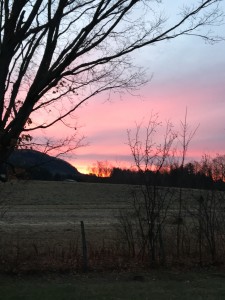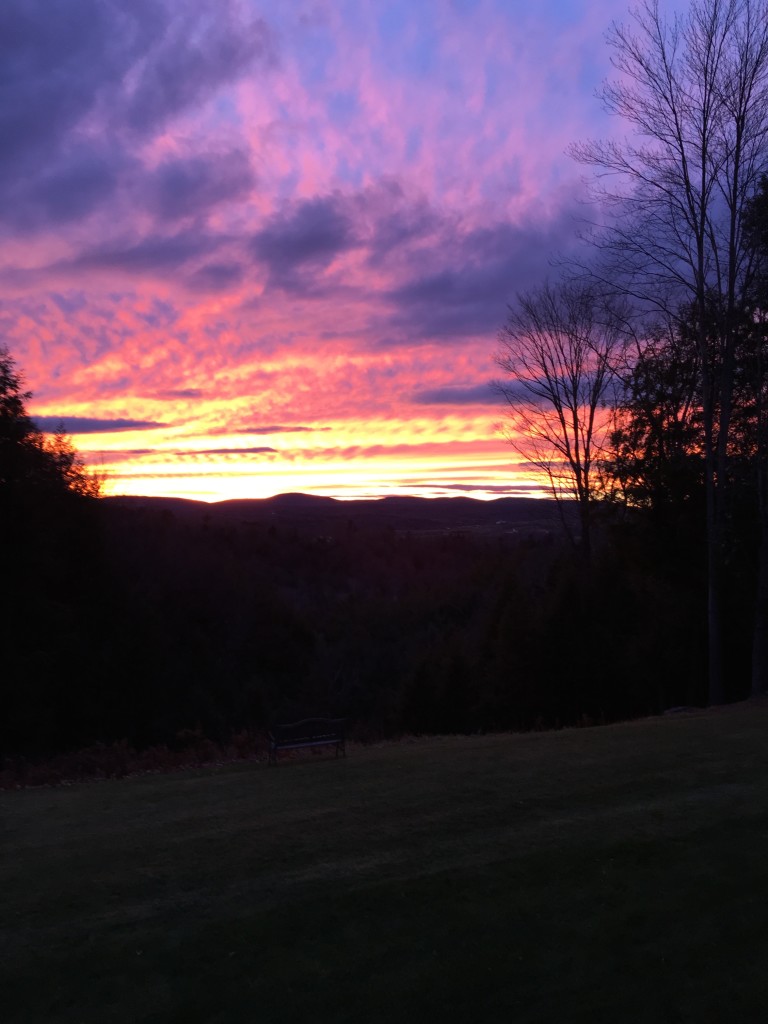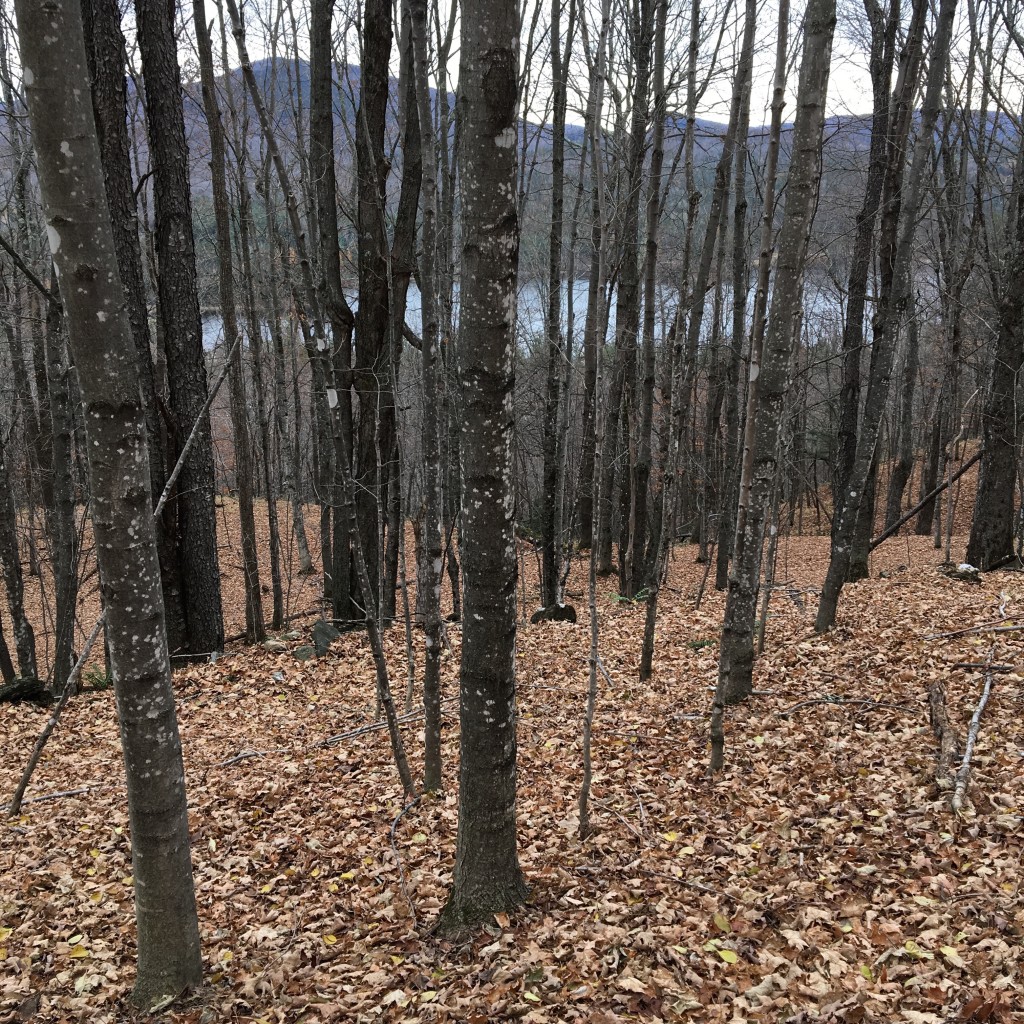You’re in it now. The holiday season. No matter how you treat it, Thanksgiving is the beginning of a holiday marathon that ends for some on January 2 and for others on February 14.
It’s Sunday morning and you’re reading the paper. What led you to this point? Perhaps on Wednesday you finished early at work and headed home or here to Vermont to visit and wrap up the final preparations for, most likely, one of the most glorious and gluttonous meals of the year.
Thanksgiving is the one holiday nearly everyone can agree on and celebrate. There’s no quarrel over the naming of it and no squabbling over the commercialism. (Of course there’s the struggle between Native Americans and Pilgrims and the Christmas – strike that – holiday – decorations, songs and sales that began just after Halloween, but …)
Thanksgiving is the warm up to the main events, the 5k that spikes your speed for the marathon. Hanukkah falls early in December this year, Christmas on the 25th, and for all others, school breaks, office parties and holiday events mark a period of merry-making as an occasion to prepare for, endure and ultimately recover from.
Thanksgiving. Hmmm. Let’s see. After Wednesday you may have jumped out of bed early Thursday morning to go run a Turkey Trot or Gobble Wobble, or you may have dashed to the kitchen to begin the final round of cooking for the feast to follow. After the travel, sports, football games and feast, you finally sink into bed exhausted from the sprint to the finish.
But can you recover? No. It’s up early (and I do mean early) to attack Black Friday with a vengeance. After an all out race on Thursday, you’re really not up for the endurance event on Friday. However, it happens, and you must draw on your tediously conditioned reserves, your base.
Saturday is the family’s opportunity to ski (several resorts are optimistically open and there are always the early season trails on which one can make his or her way down, albeit cautiously), explore and visit, in addition to the endless feeding of the multitudes that inevitably follows Thursday, though everyone declared they would never eat again. Saturday is a day of intervals, either dragging along or speeding forward, on a straight path or multiple detours.
Alas, post Thanksgiving Sunday dawns. The fourth day of this particular event signals one of two things. There might be a frantic effort to stuff in a few more non-working activities (or leftovers), or one last-ditch attempt to come home with a buck. Or, the day may demand recovery. Perhaps the only exercise for many will be handling the remote. Monday, a workday, looms as threat or relief, a return to schedule.
But will you return to what has become the usual? Most likely, the answer is no. First of all, your body has become accustomed to an abundance of holiday foods. Rather than being satiated, your appetite now demands more. And more often. You decide you want to bake cookies, or that your friends would just love a home-cooked something as a gift for the next gift-giving holiday. Very nice. But are you sure? Or is it just your need to hang out in the kitchen, pick up a spoon and stir something? And please, no fruitcakes.
If you celebrate Hanukkah, you’re on the fast track for your next extended event with barely a recovery period. You must be organized, honor your need for rest and recovery even as you push forward to the start line. For others, preparations for the Christmas holiday season begin on Thanksgiving evening. Perhaps you watch one of the versions of “Miracle on 34th Street” to put you in the mood. Maybe you drag out your boxes of decorations, write your gift list or organize cards, stamps and addresses.(Note: there continues to be some sort of practice of mailing greetings. The ready use of the internet has altered forever the face of correspondence and giving with electronically delivered holiday wishes and the ever useful last minute gift card.)
Somewhere in the intervening weeks professional obligations must be met while scrambling to put the finishing touches on the end-of-the-year fiscal records and social calendar. January 1st will arrive all too soon and you will begin another new year in whatever condition you may have brought upon yourself.
An athlete periodizes his or her annual training plan, as well as shorter blocks such as the holiday season. For many athletes, this last month waiting for snow conditions to cooperate or this first month of on snow activity marks the start of their peak season. For others, December is the off season, the month of play and early base building before January training picks up in earnest.
The off season is never entirely sedentary. To give it all up in favor of a six-pack and the sofa is to invite an uncomfortable and discouraging return to training. A happy mix of activity is the key to maintaining enough fitness to move forward, but enough rest and relaxation to allow fatigued or damaged bodies to become whole.
Waning dedication to one’s sport, even to the extent of burn out, is always a risk and can be circumvented by deliberate time off. Better to choose alternative activities than be sidelined by overuse injury, don’t you think?
Traditional recommendations for athletes during their off season is to step away from their primary sport and focus attention and energy on other types of training. For example, a cyclist or runner should take advantage of the off season to further his or her core conditioning, strength training and even more intense yoga practice. Later, during peak season, whether competing, touring or adding miles, the pendulum will swing in the other direction and core, strength and other practices should moderate to balance the increased intensity of sport training.
Mentally a break is superb. Though reading and studying one’s sport or passion is motivating and educational, a good chunk of fiction might better relax the personality that self-disciplines.
The final piece of the off season pie is sweet. Take time to roll on the floor with your kids, meander through the woods (after rifle season and/or garbed in orange), slide recklessly down a hill, try some pond skating (when thoroughly frozen, please), roll a ball down an alley or try an old fashioned game of hide and seek.
Stop to notice spectacular sunrises and by all means plan to celebrate Winter Solstice. Do you remember last winter when I challenged you to find new and different outdoor ways to commemorate each full moon? Have you done so? Some of you have and keep in touch to let me know that you have had snow shoe adventures, hiked, paddled, enjoyed moonlight picnics, and more. I have heard of some good ones.The next full moon falls on December 25th. How will you celebrate?
Until then, it is Sunday, the fourth day of the initial holiday athletic event, Thanksgiving. You have done it. Now you are ready to look forward to the month of December and all that it means to you and yours.
May the habit of giving thanks be one you practice regularly. Whatever our situation in life may be, there is always something for which to be grateful. You know the old saying, “any day I wake up in the morning is a good day.”
The American author William Arthur Ward wrote: “Gratitude can transform common days into thanksgivings, turn routine jobs into joy, and change ordinary opportunities into blessings.”
There’s this, too: “As we express our gratitude, we must never forget that the highest appreciation is not to utter words, but to live by them.” John F. Kennedy.





